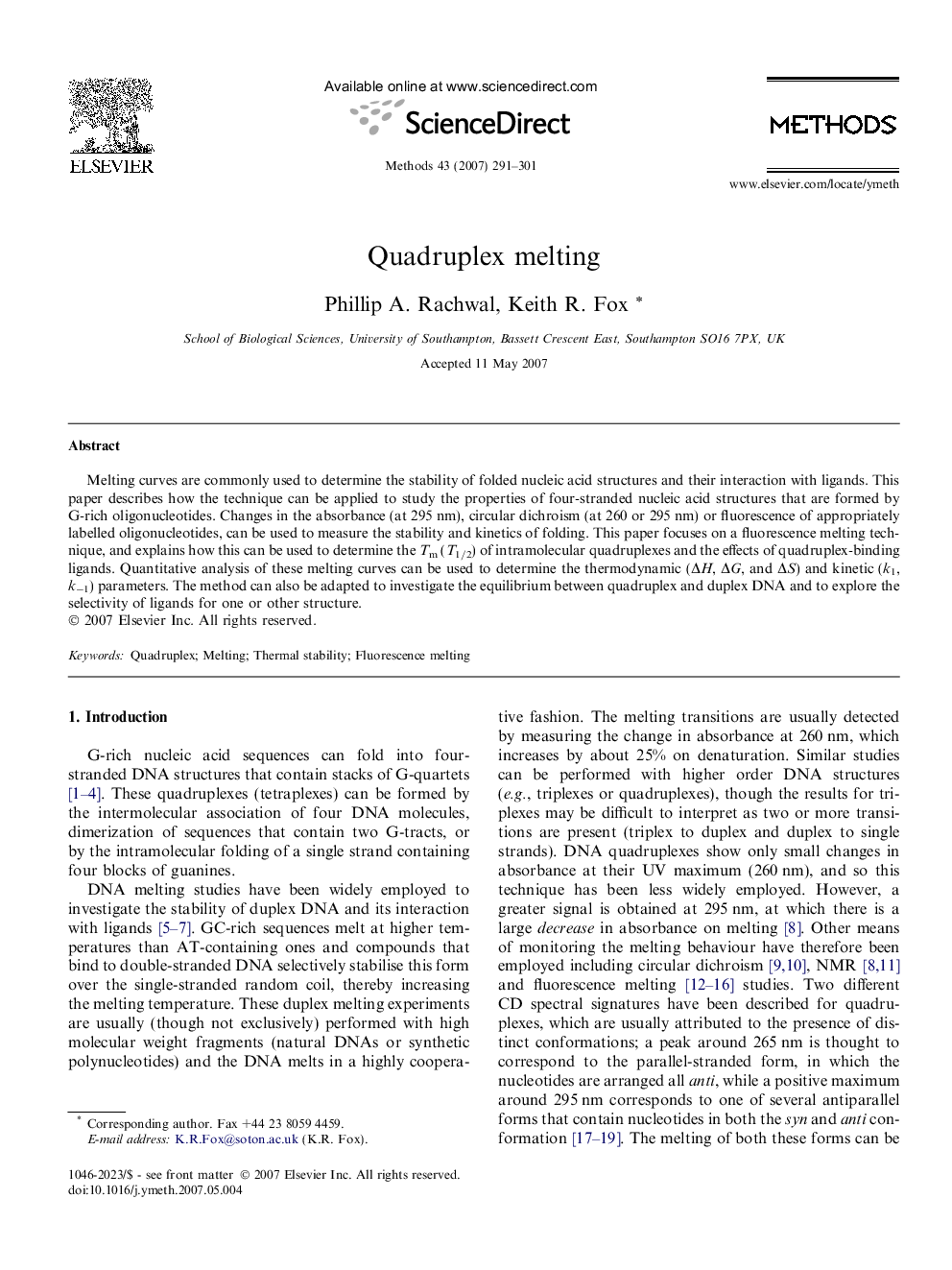| Article ID | Journal | Published Year | Pages | File Type |
|---|---|---|---|---|
| 10826442 | Methods | 2007 | 11 Pages |
Abstract
Melting curves are commonly used to determine the stability of folded nucleic acid structures and their interaction with ligands. This paper describes how the technique can be applied to study the properties of four-stranded nucleic acid structures that are formed by G-rich oligonucleotides. Changes in the absorbance (at 295 nm), circular dichroism (at 260 or 295 nm) or fluorescence of appropriately labelled oligonucleotides, can be used to measure the stability and kinetics of folding. This paper focuses on a fluorescence melting technique, and explains how this can be used to determine the Tm (T½) of intramolecular quadruplexes and the effects of quadruplex-binding ligands. Quantitative analysis of these melting curves can be used to determine the thermodynamic (ÎH, ÎG, and ÎS) and kinetic (k1, kâ1) parameters. The method can also be adapted to investigate the equilibrium between quadruplex and duplex DNA and to explore the selectivity of ligands for one or other structure.
Keywords
Related Topics
Life Sciences
Biochemistry, Genetics and Molecular Biology
Biochemistry
Authors
Phillip A. Rachwal, Keith R. Fox,
